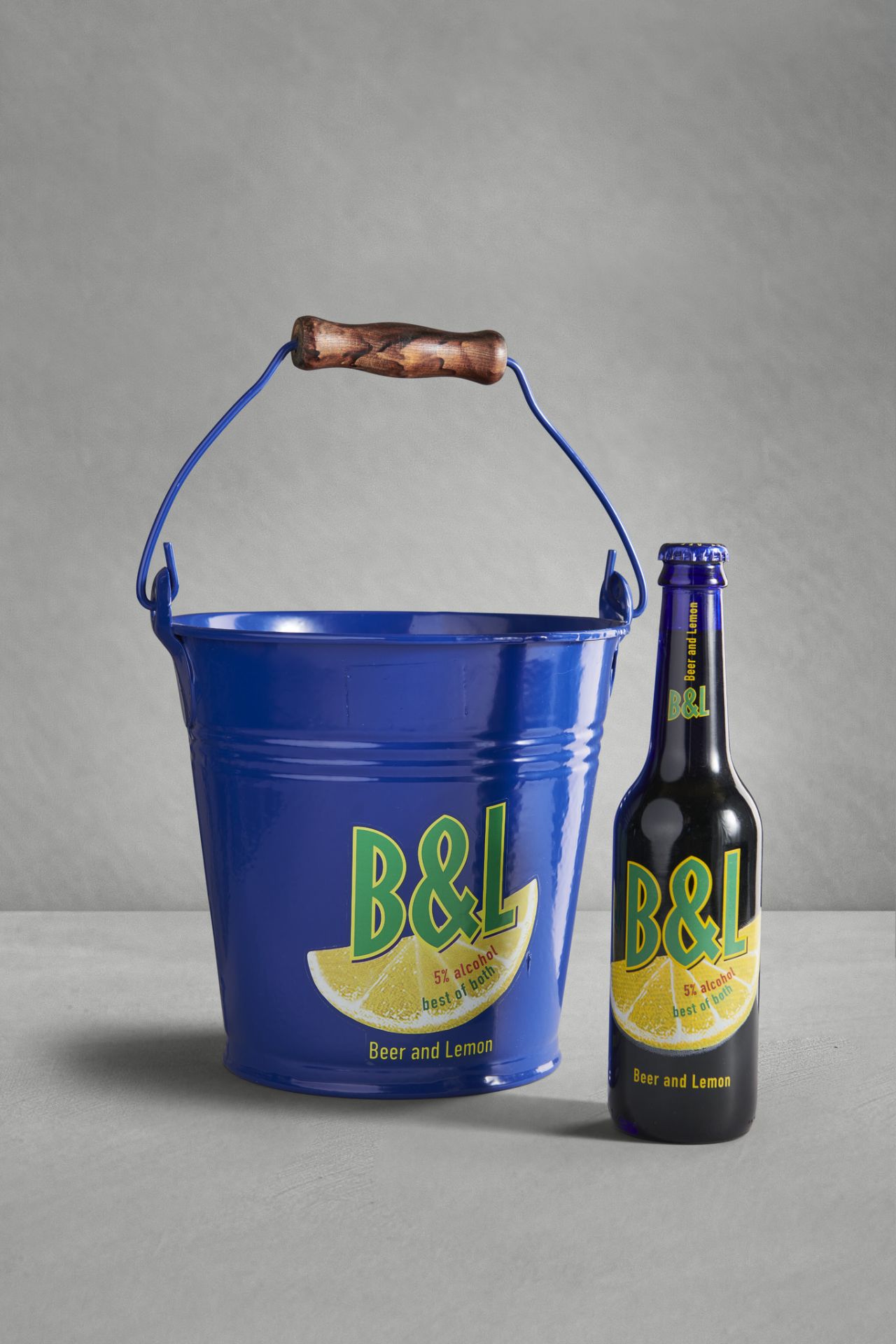INFO
Beer bottle Beer&Lemon
1998
glass, metal, beer
24 x 5.6 x 5.6 cm
Bucket
1998
metal, wood
23 x 13 x 29 cm

A new look for ‘oud bruin’ beer
In the late 1990s, Heineken launched a beer mix drink with lemonade under the name BOB, an abbreviation of Best of Both. However, because that abbreviation already existed in Belgium for ‘Deliberately Sober Driver,’ Heineken decided to rename it B&L: Beer and Lemon.
Sweet beer variants are as old as ‘Oud Bruin,’ a brown ale, a type known for its high sugar content. It seems to have originated by accident in the 19th century, from beer whose yeast cells were not given time to fully ferment and convert the sugars from the wort into carbon dioxide and alcohol. Result: a sweet beer with a low alcohol content.
Ladies’ beer
The original ‘old brown’ beer was recommended to nursing women because of its nutritiousness. Heineken’s later Oud Bruin, with added sugar as well as caramel for colour, was especially popular with elderly ladies. In 1977, the alcohol content went down further from 3.5 to 2.5%.
For young people, a new sweet beer drink, Shandy, was introduced onto the market: a mix of lager and Seven-Up with only 0.5% alcohol; so legally not an alcoholic drink. Its producer Royal Club, part of the Heineken subsidiary Vrumona, based it on its 19th-century predecessor favoured by British soldiers, who mixed beer with lemonade.
Cyclist beer
The similar German Radler, a 50/50 mix of real lemonade and dark beer, also goes way back. According to one source, beer gardens served it in the 1920s as a low-alcohol alternative to cycling tourists, ‘Fahrradler.’ Another source attributes its invention to Franz Kugler, an innkeeper near Munich. He reportedly cut his beer with lemonade on a beautiful summer day in 1922, because he feared running out of beer. Radler has been produced in Central and Eastern Europe in many variations ever since.
Expensive bottle
The 1998 B&L was Heineken’s first attempt to launch Radler in the Netherlands. The drink arrived in shops in pretty blue bottles that were produced in Rinteln, Germany. However, because of the expensive bottle B&L was not a commercial success. Moreover, the name was not appealing, and consumers were simply not ready for it. Heineken finally introduced the German drink on the Dutch market with Amstel Radler in 2013.